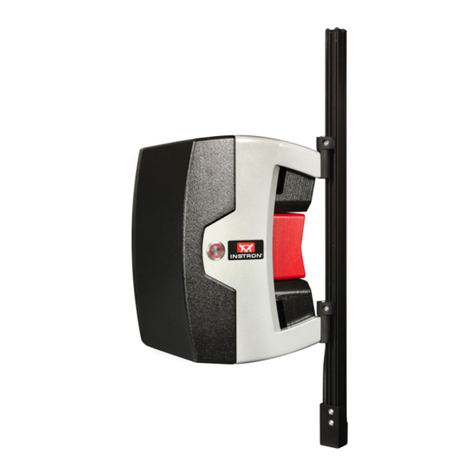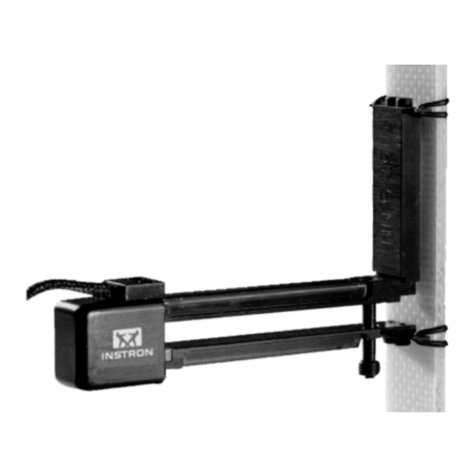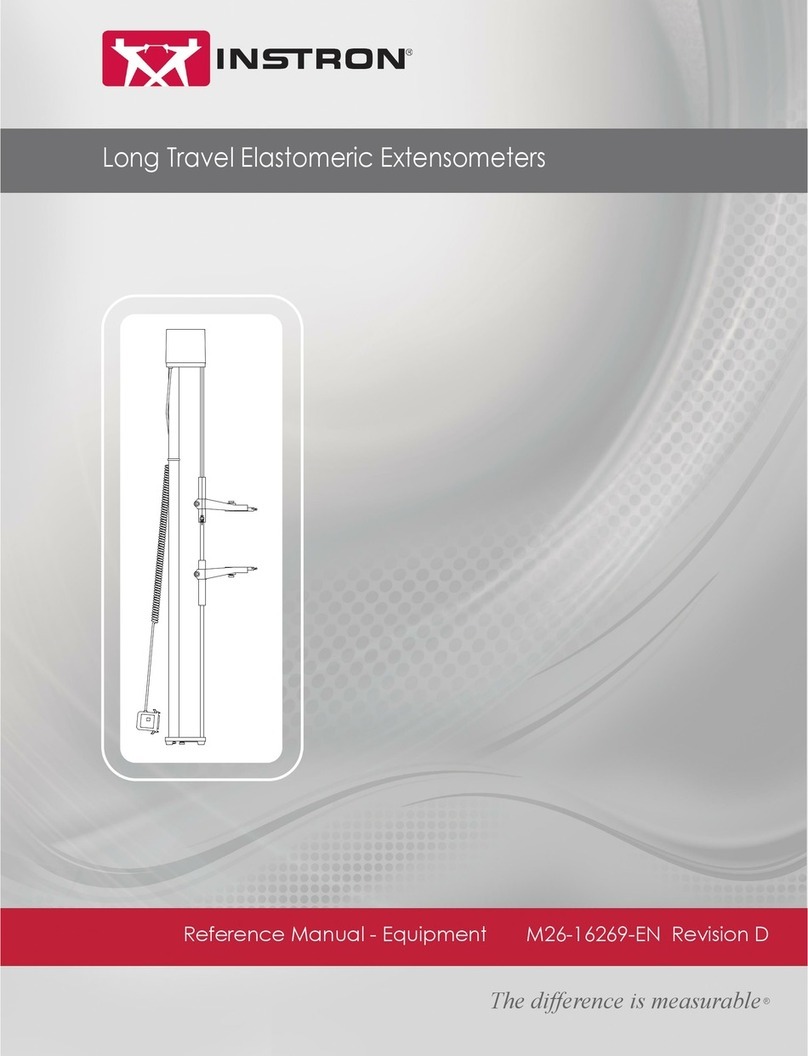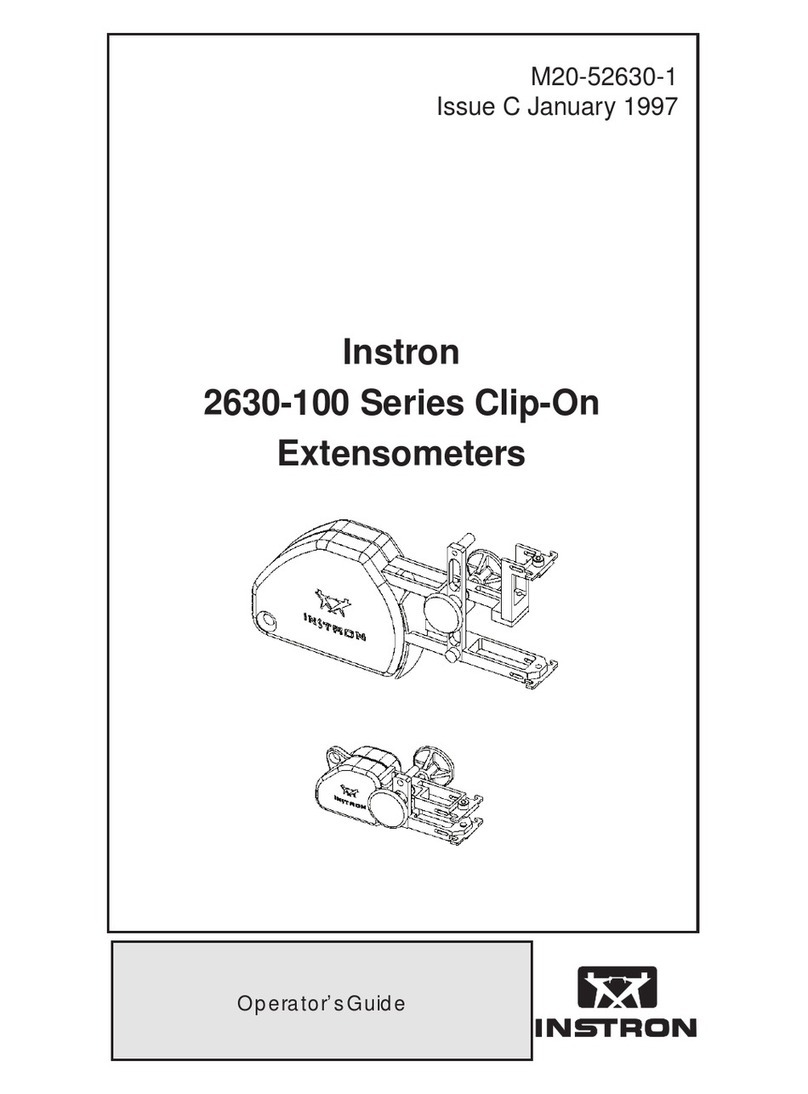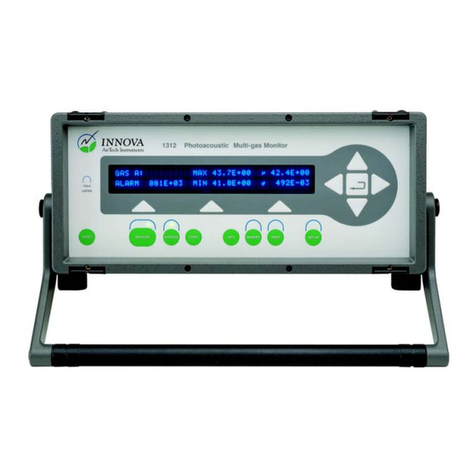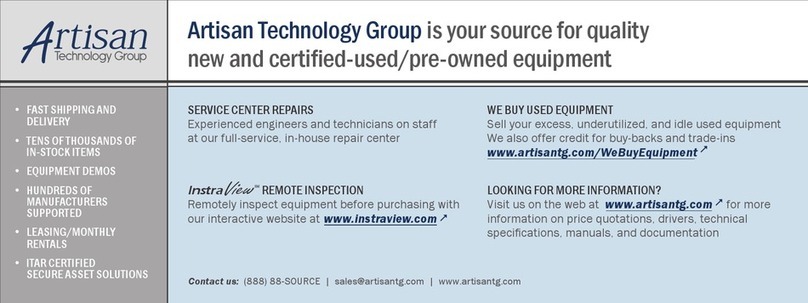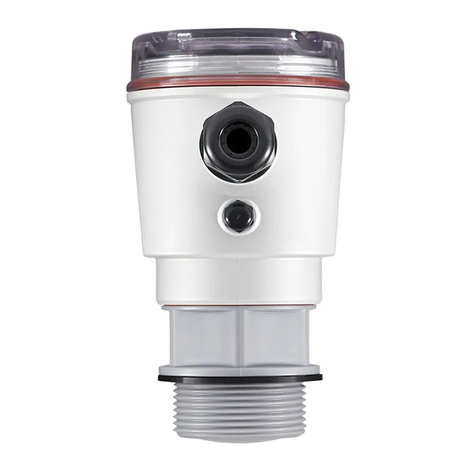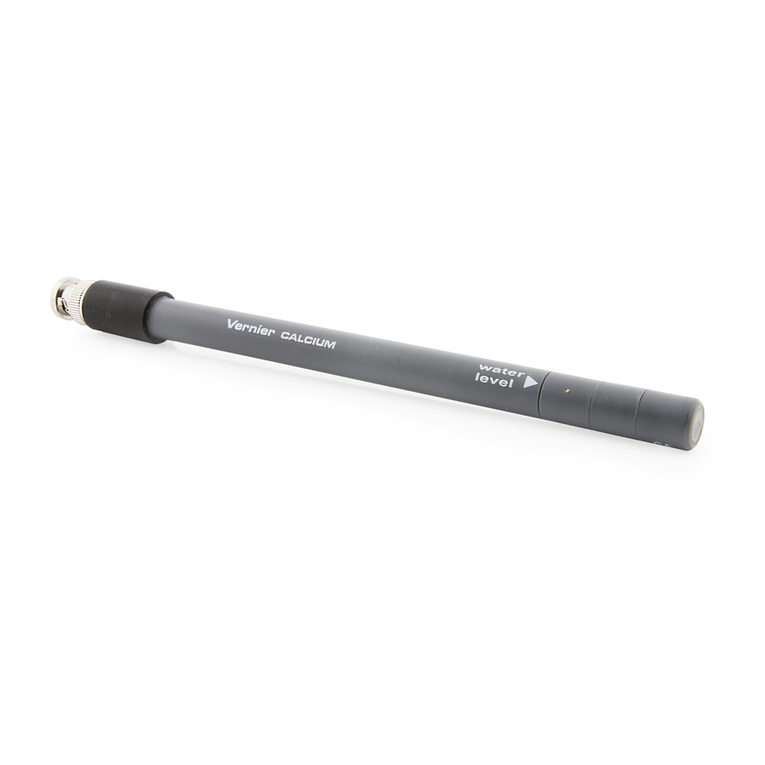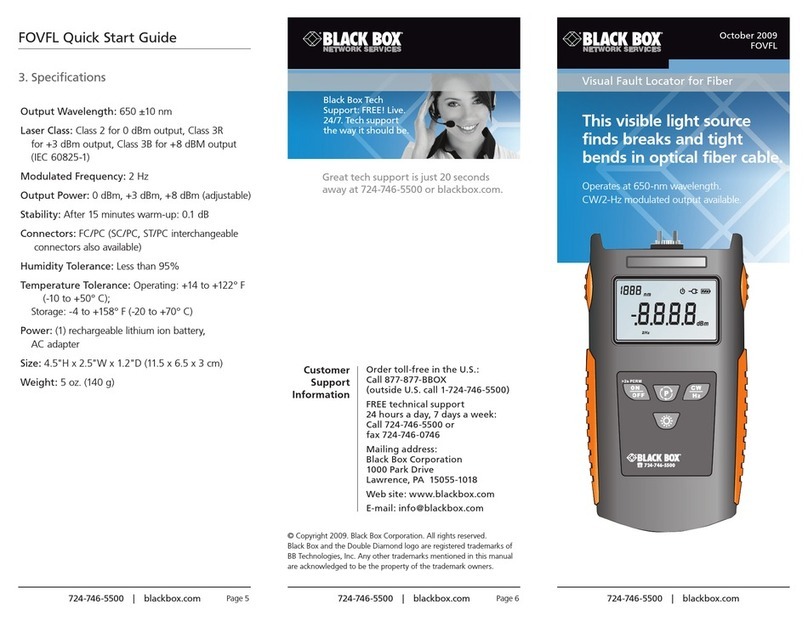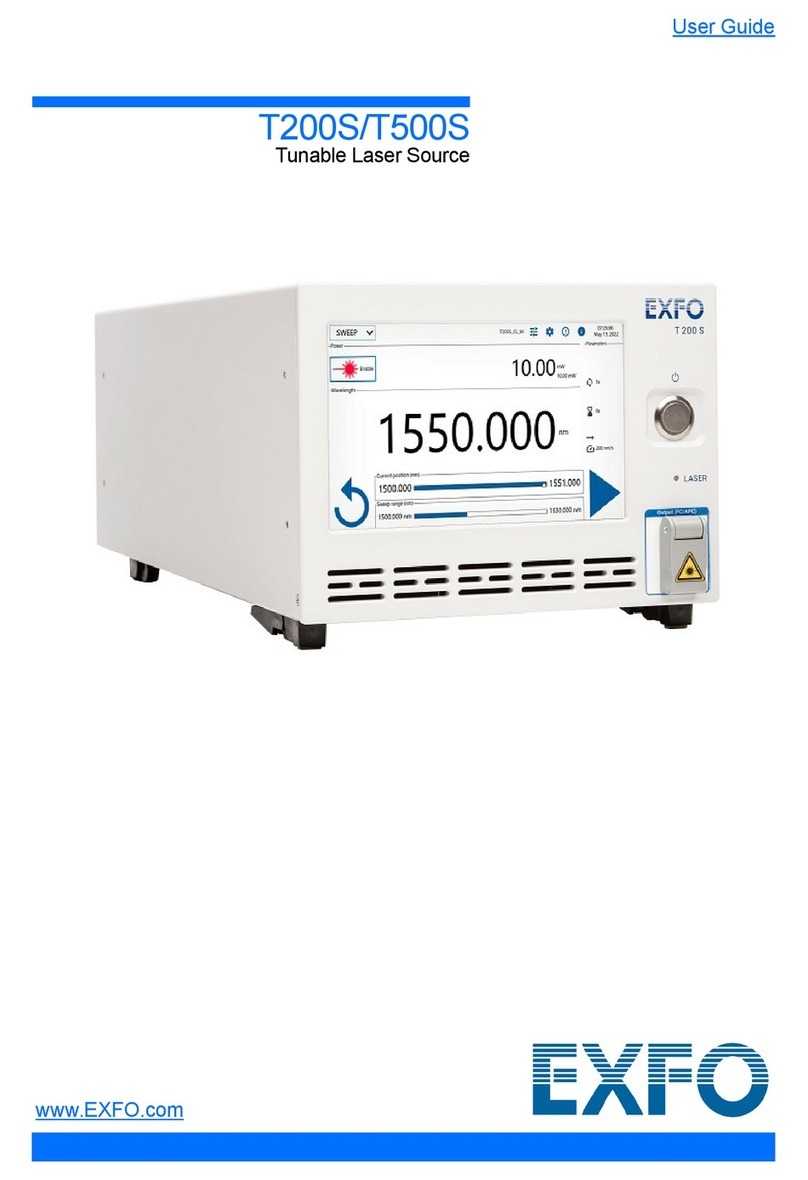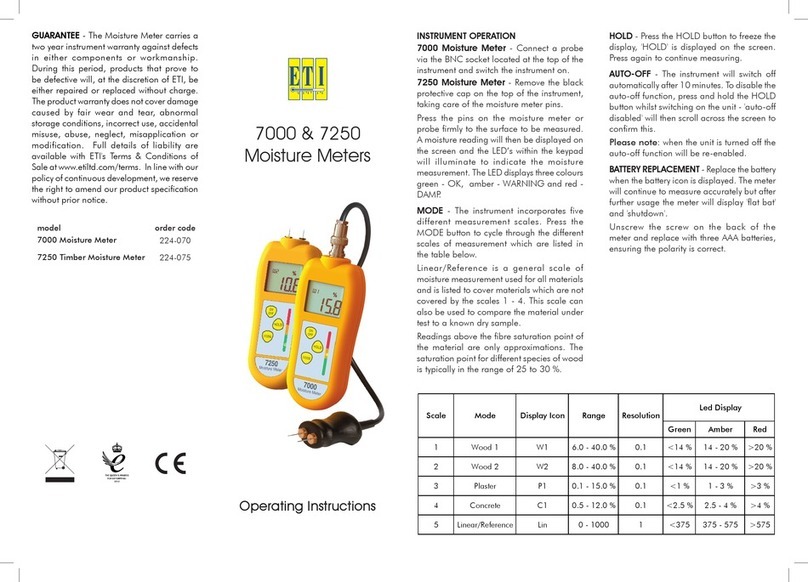Instron 2630-100 Series User manual

2630-100 Series
Clip-On Extensometer
Reference Manual - Equipment
M20-52630-1 Revision H
The difference is measurable ®

Electromagnetic Compatibility
Where applicable, this equipment is designed to comply with
International Electromagnetic Compatibility (EMC) standards.
To ensure reproduction of this EMC performance, connect this
equipment to a low impedance ground connection. Typical
suitable connections are a ground spike or the steel frame of a
building.
Proprietary Rights Notice
This document and the information that it contains are the
property of Illinois Tool Works Inc. (ITW). Rights to duplicate or
otherwise copy this document and rights to disclose the
document and the information that it contains to others and the
right to use the information contained therein may be acquired
only by written permission signed by a duly authorized officer of
ITW.
Trademarks
Instron® is a registered trademark of Illinois Tool Works Inc.
(ITW). Other names, logos, icons and marks identifying Instron
products and services referenced herein are trademarks of ITW
and may not be used without the prior written permission of ITW.
Other product and company names used herein are trademarks
or trade names of their respective companies.
© Copyright 2016 Illinois Tool Works Inc.
All rights reserved.
All of the specifications shown in this document
are subject to change without notice.
Product Support: www.instron.com

Preliminary Pages
3
Product Support: www.instron.com
General Safety Precautions
Materials testing systems are potentially
hazardous.
Materials testing involves inherent hazards from
high forces, rapid motions, and stored energy.
You must be aware of all moving and operating
components in the testing system that are
potentially hazardous, particularly force actuators
or a moving crosshead.
Before operating the system, ensure you gain a
thorough understanding of the equipment by:
•receiving training on the safe operation
of the system.
•reading and understanding the general
hazards associated with materials testing
systems as detailed on pages 5to 11.
•carefully reading all relevant manuals
and observing all Warnings and Cautions.
The term Warning is used where a hazard
may lead to injury or death. The term
Caution is used where a hazard may lead
to damage to equipment or to loss of
data.
•carrying out your own safety risk
assessment on the use of the test
system, test methods employed,
specimen loading and specimen
behavior at failure.

Preliminary Pages
4 M20-52630-1-EN
General Safety Precautions
Instron products, to the best of its knowledge,
comply with various national and international
safety standards, in as much as they apply to
materials and structural testing. We certify that
our products comply with all relevant EU
directives (CE mark).
Because of the wide range of applications with
which our instruments are used, and over which
we have no control, additional protection devices
and operating procedures may be necessary due
to specific accident prevention regulations, safety
regulations, further EEA directives or locally valid
regulations. The extent of our delivery regarding
protective devices is defined in your initial sales
quotation. We are thus free of liability in this
respect.
At your request, we will gladly provide advice and
quotations for additional safety devices such as
protective shielding, warning signs or methods of
restricting access to the equipment.

Preliminary Pages
5
Product Support: www.instron.com
Warnings
Crush Hazard - Allow only one person to
handle or operate the system at all
times.
Operator injury may result if more than one
person operates the system. Before working
inside the hazard area between the grips or
fixtures, ensure that no other personnel can
operate the computer or any of the system
controls.
Crush Hazard - Take care when installing
or removing a specimen, assembly,
structure, or load string component.
Installation or removal of a specimen, assembly,
structure, or load string component involves
working inside the hazard area between the grips
or fixtures. Keep clear of the jaws of a grip or
fixture at all times. Keep clear of the hazard area
between the grips or fixtures during actuator or
crosshead movement.
Ensure that all actuator or crosshead movements
necessary for installation or removal are slow
and, where possible, at a low force setting.

Preliminary Pages
6 M20-52630-1-EN
Hazard - Press the Emergency Stop
button whenever you consider that an
unsafe condition exists.
The Emergency Stop button removes hydraulic
power or electrical drive from the testing system
and brings the hazardous elements of the system
to a stop as quickly as possible. It does not
isolate the system from electrical power, other
means are provided to disconnect the electrical
supply. Whenever you consider that safety may
be compromised, stop the test using the
Emergency Stop button. Investigate and resolve
the situation that caused the use of the
Emergency Stop button before you reset it.
Flying Debris Hazard - Wear eye
protection and use protective shields or
screens whenever any possibility exists
of a hazard from the failure of a
specimen, assembly or structure under
test.
Wear eye protection and use protective shields or
screens whenever a risk of injury to operators
and observers exists from the failure of a test
specimen, assembly or structure, particularly
where explosive disintegration may occur. Due to
the wide range of specimen materials,
assemblies or structures that may be tested, any
hazard resulting from the failure of a test
specimen, assembly or structure is entirely the
responsibility of the owner and the user of the
equipment.
Warnings

Preliminary Pages
7
Product Support: www.instron.com
Flying Debris Hazard - Make sure that
test specimens are installed correctly in
grips or fixtures in order to eliminate
stresses that can cause breakage of grip
jaws or fixture components.
Incorrect installation of test specimens creates
stresses in grip jaws or fixture components that
can result in breakage of these components. The
high energies involved can cause the broken
parts to be projected forcefully some distance
from the test area. Install specimens in the
center of the grip jaws in line with the load path.
Insert specimens into the jaws by at least the
amount recommended in your grip
documentation. This amount can vary between
66% to 100% insertion depth; refer to supplied
instructions for your specific grips. Use any
centering and alignment devices provided.
Hazard - Protect electrical cables from
damage and inadvertent disconnection.
The loss of controlling and feedback signals that
can result from a disconnected or damaged
cable causes an open loop condition that may
drive the actuator or crosshead rapidly to its
extremes of motion. Protect all electrical cables,
particularly transducer cables, from damage.
Never route cables across the floor without
protection, nor suspend cables overhead under
excessive strain. Use padding to avoid chafing
where cables are routed around corners or
through wall openings.
Warnings

Preliminary Pages
8 M20-52630-1-EN
Hazard - Set the appropriate limits
before performing loop tuning or running
waveforms or tests.
Operational limits are included within your testing
system to suspend motion or shut off the system
when upper and/or lower bounds of actuator or
crosshead travel, or force or strain, are reached
during testing. Correct setting of operational
limits by the operator, prior to testing, will reduce
the risk of damage to test article and system and
associated hazard to the operator.
High/Low Temperature Hazard - Wear
protective clothing when handling
equipment at extremes of temperature.
Materials testing is often carried out at non-
ambient temperatures using ovens, furnaces or
cryogenic chambers. Extreme temperature
means an operating temperature exceeding 60
°C (140 °F) or below 0 °C (32 °F). You must use
protective clothing, such as gloves, when
handling equipment at these temperatures.
Display a warning notice concerning low or high
temperature operation whenever temperature
control equipment is in use. You should note that
the hazard from extreme temperature can extend
beyond the immediate area of the test.
Warnings

Preliminary Pages
9
Product Support: www.instron.com
Electrical Hazard - Disconnect the
electrical power supply before
removing the covers to electrical
equipment.
Disconnect equipment from the electrical power
supply before removing any electrical safety
covers or replacing fuses. Do not reconnect the
power source while the covers are removed. Refit
covers as soon as possible.
Hazard - Do not place a testing system
off-line from computer control without
first ensuring that no actuator or
crosshead movement will occur upon
transfer to manual control.
The actuator or crosshead will immediately
respond to manual control settings when the
system is placed off-line from computer control.
Before transferring to manual control, make sure
that the control settings are such that
unexpected actuator or crosshead movement
cannot occur.
Warnings

Preliminary Pages
10 M20-52630-1-EN
Rotating Machinery Hazard - Disconnect
power supplies before removing the
covers to rotating machinery.
Disconnect equipment from all power supplies
before removing any cover which gives access to
rotating machinery. Do not reconnect any power
supply while the covers are removed unless you
are specifically instructed to do so in the manual.
If the equipment needs to be operated to perform
maintenance tasks with the covers removed,
ensure that all loose clothing, long hair, etc. is
tied back. Refit covers as soon as possible.
Hazard - Shut down the hydraulic power
supply and discharge hydraulic pressure
before disconnection of any hydraulic
fluid coupling.
Do not disconnect any hydraulic coupling without
first shutting down the hydraulic power supply
and discharging stored pressure to zero. Tie
down or otherwise secure all pressurized hoses
to prevent movement during system operation
and to prevent the hose from whipping about in
the event of a rupture.
Hazard - Shut off the supply of
compressed gas and discharge residual
gas pressure before you disconnect any
compressed gas coupling.
Do not release gas connections without first
disconnecting the gas supply and discharging
any residual pressure to zero.
Warnings

Preliminary Pages
11
Product Support: www.instron.com
Hazard - Ensure components of the load
string are correctly pre-loaded to
minimize the risk of fatigue failure.
Dynamic systems, especially where load
reversals through zero are occurring, are at risk
of fatigue cracks developing if components of the
load string are not correctly pre-loaded to one
another. Apply the specified torque to all load
string fasteners and the correct setting to wedge
washers or spiral washers. Visually inspect highly
stressed components such as grips and threaded
adapters prior to every fatigue test for signs of
wear or fatigue damage.
Warnings

Preliminary Pages
12 M20-52630-1-EN

Preliminary Pages
13
Product Support: www.instron.com
Table of Contents
Chapter 1 Introduction . . . . . . . . . . . . . . . . 15
About the Extensometers . . . . . . . . . . . . . . . . . 15
Extensometer Features. . . . . . . . . . . . . . . . . . . 16
Equipment Supplied . . . . . . . . . . . . . . . . . . . . . 18
Chapter 2 Preparation for Testing . . . . . . . 21
About Preparation . . . . . . . . . . . . . . . . . . . . . . . 21
Configuring the Extensometer . . . . . . . . . . . . . 22
Fitting Wire Clips . . . . . . . . . . . . . . . . . . . . . 22
Knife Edge Changing . . . . . . . . . . . . . . . . . . 23
Specimen Centering Stops . . . . . . . . . . . . . 24
Attaching the Extensometer . . . . . . . . . . . . . . . 25
Gauge Length Setting . . . . . . . . . . . . . . . . . 25
About Mounting to Specimen . . . . . . . . . . . 28
Mounting to the Specimen using Both Hands 29
Mounting to the Specimen using One Hand . 30
Elastic Bands or O-Rings . . . . . . . . . . . . . . . 31
Variable Pressure Specimen Clamp. . . . . . 32
Calibration . . . . . . . . . . . . . . . . . . . . . . . . . . . . . 34
Automatic Electrical Calibration . . . . . . . . . 34
Manual Electrical Calibration . . . . . . . . . . . 35
Manual Mechanical Calibration . . . . . . . . . 36
Verification. . . . . . . . . . . . . . . . . . . . . . . . . . . . . 36

Preliminary Pages
14 M20-52630-1
Care of the Extensometer. . . . . . . . . . . . . . . . . 37
Routine Maintenance . . . . . . . . . . . . . . . . . 37
Storing your Extensometer . . . . . . . . . . . . . 37
Repair . . . . . . . . . . . . . . . . . . . . . . . . . . . . . . 38
Extensometer Holder. . . . . . . . . . . . . . . . . . 38
Chapter 3 Testing . . . . . . . . . . . . . . . . . . . . 43
About Testing. . . . . . . . . . . . . . . . . . . . . . . . . . . 43
Working in Strain Control . . . . . . . . . . . . . . . . . 44
Appendix A Specifications . . . . . . . . . . . . . . 47
Gauge Lengths and Travel . . . . . . . . . . . . . . . . 48
System Compatibility . . . . . . . . . . . . . . . . . . . . 50
General Specifications . . . . . . . . . . . . . . . . . . . 52
Environmental Conditions . . . . . . . . . . . . . . . . 53
Appendix B Options and Accessories . . . . . 57
Optional Accessories and Spares. . . . . . . . . . . 57
Variable Pressure Specimen Clamp. . . . . . . . . 58
Clips for Round Specimens . . . . . . . . . . . . . . . 60
Clips for Rectangular Specimens . . . . . . . . . . . 62
Index. . . . . . . . . . . . . . . . . . . . . . . . . . . . . . . . . 65

15Product Support: www.instron.com
Chapter 1
Introduction
•About the Extensometers . . . . . . 15
•Extensometer Features . . . . . . . . 16
•Equipment Supplied. . . . . . . . . . . 18
About the Extensometers
The 2630-100 series extensometers
convert the mechanical displacement of a
strained test specimen into an electrical
signal. When used with the current range
of Instron testing machines, each
extensometer is automatically recognised,
and can be calibrated at the touch of a
button.
The displacement is transmitted by a light
rigid frame to strain gauges bonded to a
flexural element. The gauges are arranged
in a fully active four-arm Wheatstone
Bridge circuit.
The 2630-100 series of extensometers
includes different gauge lengths/strain
range options to suit a wide range of
specimen characteristics.

Chapter: Introduction
16 M20-52630-1-EN
The robust construction of the
extensometer provides accuracy and
reliability.
When not in use, the extensometer should
be stored in the case supplied with it.
Extensometer Features
•Ergonomic, lightweight, cross-braced
design with overload protection.
•Easy attachment and release from the
specimen facilitate single-handed
operation.
•Simple, cone latch gauge-length setting
method with automatic
disengagement.
•Precise, fixed gauge-lengths with
automatic recognition and calibration
capability.

Extensometer Features
17
Product Support: www.instron.com
•Available in metric and U.S. Customary
versions to meet ISO 9513 and
ASTM E83 standards of accuracy.
•Low operating-force arms with single-
bevel, interchangeable knife edges.
•Suitable for a wide range of specimen
materials, geometry and size with a
choice of attachment methods.
•Combined cable cleat and
extensometer holder with provision for
retaining cord attachment to the
extensometer.
•High impact plastic storage case with a
contour moulded insert to securely
retain the extensometer and accessory
parts together with its Calibration
Certificate and manual.

Chapter: Introduction
18 M20-52630-1-EN
Equipment Supplied
See Figure 1.
1. Extensometer
2. Cable cleat and extensometer holder
3. 1.5 mm hexagon wrench
4. 11 pairs of wire clips
5. Specimen centering stops
6. This manual
7. Calibration certificate
8. Foam lined case
For optional accessories and spares,
see Appendix B.

Equipment Supplied
19
Product Support: www.instron.com
Figure 1. Case Layout
Case Manual
Extensometer Cable Cleat and
Extensometer Holder
Hexagon
Wrench
Clips for
Round
Specimens
Clips for
Rectangular
Specimens
Specimen
Stops

Chapter: Introduction
20 M20-52630-1-EN
Other manuals for 2630-100 Series
1
Table of contents
Other Instron Measuring Instrument manuals
Popular Measuring Instrument manuals by other brands
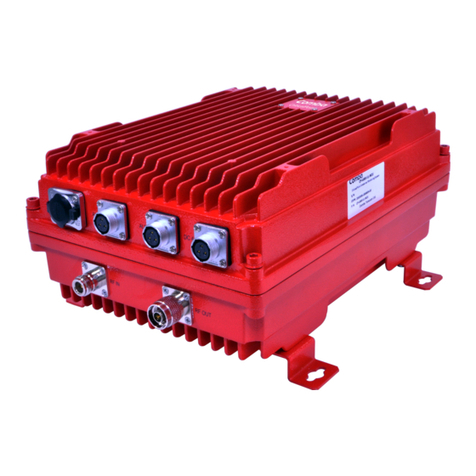
COMBA
COMBA CriticalPoint QE Series user manual

Horiba Scientific
Horiba Scientific LAQUAtwin-K-11 instruction manual
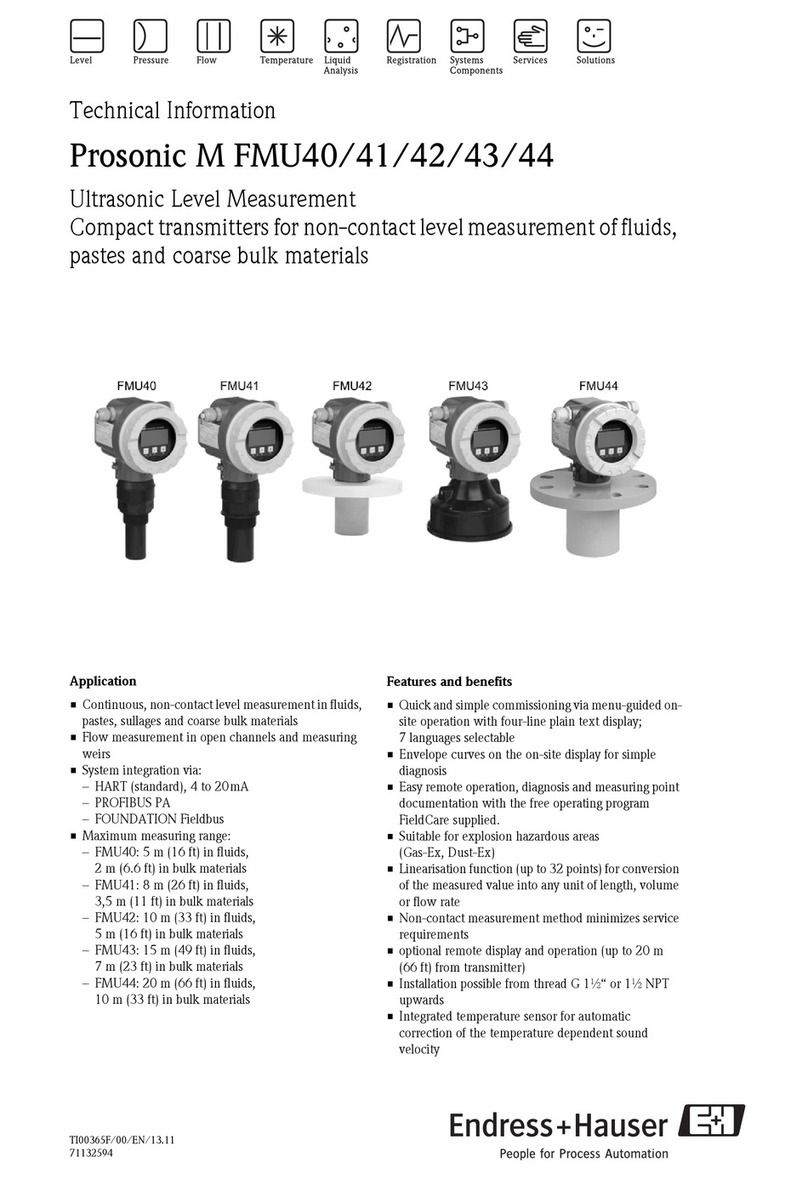
Endress+Hauser
Endress+Hauser Prosonic M FMU40 technical information
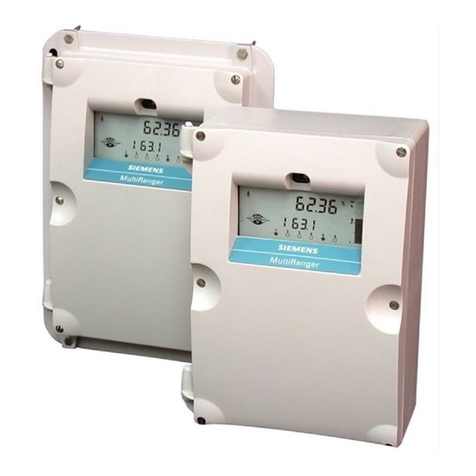
Siemens
Siemens multiranger 100 Quick start manual
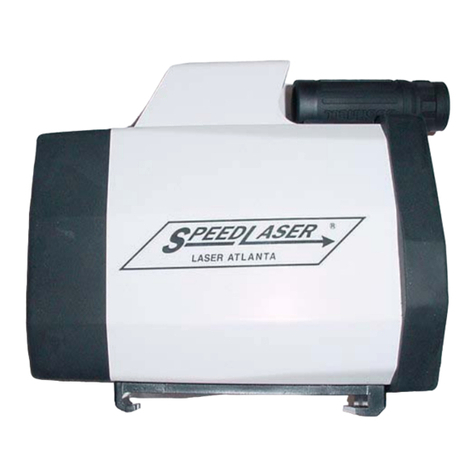
Laser Atlanta
Laser Atlanta SpeedLaser user guide

Veeder-Root
Veeder-Root TLS RF Wireless 2 Installation and maintenance guide

